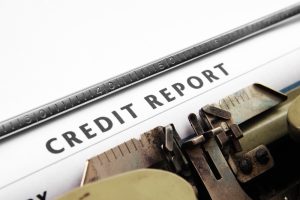 In previous articles we’ve discussed how to review and understand your credit score. But when you’re looking to make a major purchase like a house or car, creditors will look beyond your score at your full credit report.
In previous articles we’ve discussed how to review and understand your credit score. But when you’re looking to make a major purchase like a house or car, creditors will look beyond your score at your full credit report.
Understanding your credit report means that you (and potential creditors) have the potential to access a more detailed, big-picture view of your credit history.
While credit reports can differ in structure and formatting, there are some key elements that will appear on all of them.
1. Personal Information
As the name suggests, this section includes your name, address, social security number, date of birth, phone number and reported employment data. Keep in mind; employment data may not be up to date because not all employers report to the credit agencies.
2. Public Records
Court judgements, wage garnishments, liens, and bankruptcies. Some credit reports will also indicate the estimated date that an item will be removed.
3. Adverse Accounts, Potentially Negative Items
The heart of your credit report! Items such as a mortgage or car loan that has fixed terms and has been reported as unpaid, or late over the history of the credit line are adverse accounts. Even if you are current with your accounts, you may find your late payments listed here.
4. Accounts in Good Standing, Satisfactory Accounts
These are accounts that have been reported as paid on time and in full for the full period of time, usually up to 53 months. These accounts tend to be those on a set payment schedule like a mortgage or a car payment.
5. Revolving Accounts
These include lines of credit that can fluctuate over time such as credit cards. Often your credit report will include an 81-month (seven year) payment history showing when accounts were paid and unpaid.
6. Credit History Requests
This provides a list of creditors who have requested your credit history and the date requested. Remember, too many requests over a long period of time can adversely affect your credit score. If you see requests that you didn’t authorize it may be a sign of identity theft.
7. Personal Statement
If there are extenuating circumstances that you feel may affect your credit, you can include a personal statement. For example, if you have been a victim of identity theft, you can request that a creditor not extend any line of credit without first identifying you as the applicant.
Remember to review your report carefully. If something doesn’t look right, it may be a sign that:
- Information related to your credit is being misreported.
- Someone else’s credit line has been accidentally added to your report.
- Access to your personal information without your permission is happening
- Someone is using your identity to open new lines of credit.
If there is an issue, contact the creditor for more information and then contact the credit agency. In most cases, credit agencies will allow you to contest it.
If you’d like to learn more today, we invite you to take advantage of our credit analysis service. We can provide you with a detailed review of your credit report, a budget review, and a plan of action to improve your credit in a way that is effective and responsible.





